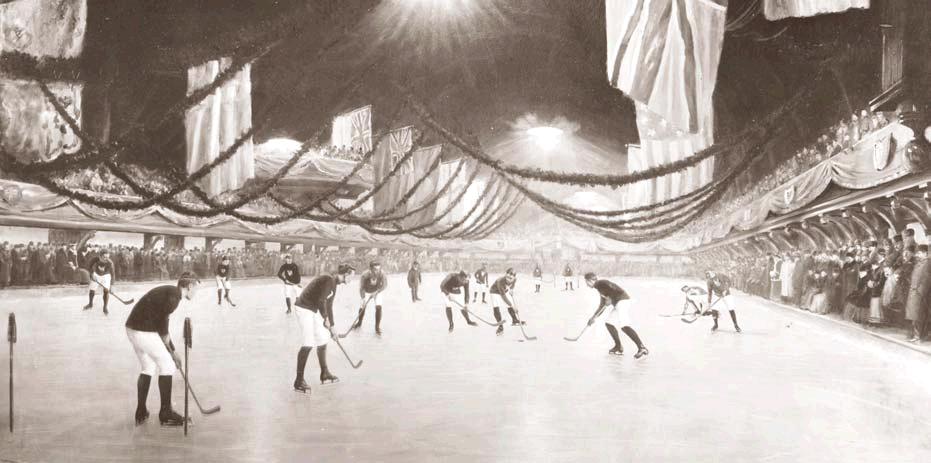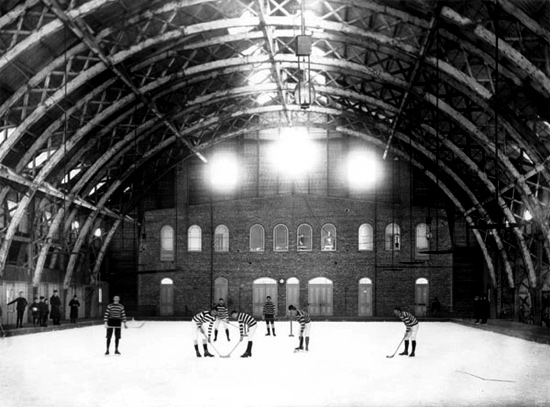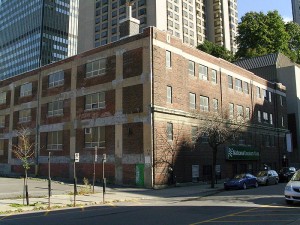They are everywhere. Nine dots, five circles, two trapezoids, six lines, 200 feet long, 85 feet wide, and at each corner have a radius of 28 feet. Not to be too specific, but of course, I’m talking about the modern hockey rink. But, how did we settle on the standard dimensions?
Unlike baseball where every stadium is incredibly different, the NHL has 30 identical arenas that have exact dimensions. Okay, maybe the beer costs a little more here or there, but the dimensions are exact. The Victoria Skating Rink which is one of the world’s first indoor rinks serves as the mould for the modern hockey rink. The dimensions were decided on simply because that was the distance between the two Montreal streets (Stanley/Drummond Street) where the rink was situated. Today all NHL rinks are the distance between Stanley and Drummond Street, or better known as regulation size.

The Victoria Rink opened in 1862 and now 150 years later the rink maintains a heavy influence over how today’s game is played. The Victoria was host to the first indoor hockey game in 1875. Hockey’s first organized game featured two teams with nine players per team, goalies, a referee, a wooden puck, and a set 60 minute duration. These first games laid the groundwork for what would become modern ice hockey.
Before 1875 hockey games were played with loose rules and varying team sizes. It wasn’t until this indoor rink was constructed that changes to the game and its organization started to take off. The limited space of indoor rinks meant that there was only enough ice for so many players, whereas previously informal games had been held on ponds with near unlimited ice space.
The culture around the game also grew after the rink was built giving hockey fans an organized and competitive game to watch. By 1896 telegraph wires were connected at the Victoria Rink to do score-by-score descriptions of a Stanley Cup series between Montreal and Winnipeg. In essence the Victoria Rink was also the home to hockey’s first media coverage. The Victoria also boasts to being the host to the first Stanley Cup playoff games in 1894. Frederick Stanley, the generous donor of the aptly named Stanley Cup witnessed his first hockey game at the Victoria Rink in 1889.

Two years after the first indoor hockey game had been played, unanimously official hockey rules were published in The Montreal Gazette. In this first draft of the rules it was deemed illegal to make a forward pass, because the rules were drawn up to resemble rugby rules, which the first hockey players would be more accustomed to. The game certainly evolved over time with number of players going from nine in 1875 down to six in 1912. As the game evolves over time and rules come and go, the structural and cultural importance of the Victoria Rink is one constant in a variable game.

The Victoria Rink was a true engineering feat with a capacity of well over 3000. The rink was Canada’s first building to be wired fully with electricity. If you were to make a hockey pilgrimage out to Montreal to check out this piece of hockey’s history, you would be hard pressed to even notice the Victoria Rink. Now the Victoria Rink is one of the most overlooked pieces of hockey’s history. On Drummond Street today there’s no monument or plaque to the birthplace of organized hockey, instead on the NHL regulation sized plot of land sits an indoor parking garage. There you have it.
Very interesting read Matt…Loved it!